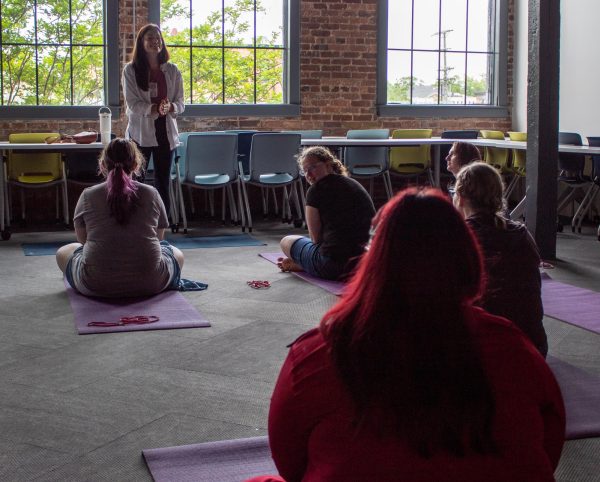Mother nature leaves mark on campus
March 1, 2018
As the weather changes, mother nature leaves her mark on campus.
Rain over the past few weeks has damaged multiple parts of campus. Three places in the Guillot University Center are damaged, as well as an area of the Student Recreation Center.
The damage in the GUC includes the Military Veteran Alliance offices, the upstairs women’s bathroom and the career center, said Executive Director of Student Affairs Auxilary Programs Bret Jennings.
Jennings said he made the purchase order to repair the roof two weeks ago, but the continual rain meant workers could not repair it until everything dried.
“As soon as (the roof) dries out, and it’s long enough to get us going, we’re ready,” Jennings said.
He said the roof did not have much structural damage, but many of the ceiling tiles need replacing.
Jennings said leaks are not uncommon because the GUC has a flat roof.
He said the damage to the roof hurts the MVA office because of the number of people who visit the area and the events they hold.
Sophomore Harley Miller said a large area in the ceiling is exposed because of tile damage.
He said he is concerned about the number of areas the rain is damaging.
“What is going to happen if this goes on for too long?” Miller said. “I’m sure mold and mildew are already starting to set it.”
Since the leaks began, Jennings said workers have moved computers to avoid water damage, extracted water from the carpet, covered the area with plastic and set out buckets to catch water.
“It’s embarrassing and it’s awful that people have to work in there,” Jennings said. “We want to say that it’s not fair, but at the same time, we are doing everything we can do.”
Jennings said the damages in the SRC caused cancellations in intramural games. Workers fixed areas of the SRC roof a year ago after leaks, but different parts of the roof began leaking.
The building has had problems with leaks since it opened in 2004, said James Eubanks, director of the SRC, in a 2017 Flor-Ala article.
“We all want it fixed tomorrow, and we know it affects our students,” Jennings said. “I wish we could do more, but at the same time it is very costly.”
Jennings said he estimates a new roof would cost around $300,000-400,000.
He said the university recently purchased an infrared scanner which they plan to use to find areas with moisture. He said he hopes this will help with future problems.
Jennings said the university is taking care of the problem, and he would like to thank those who these damages affect for their patience.










